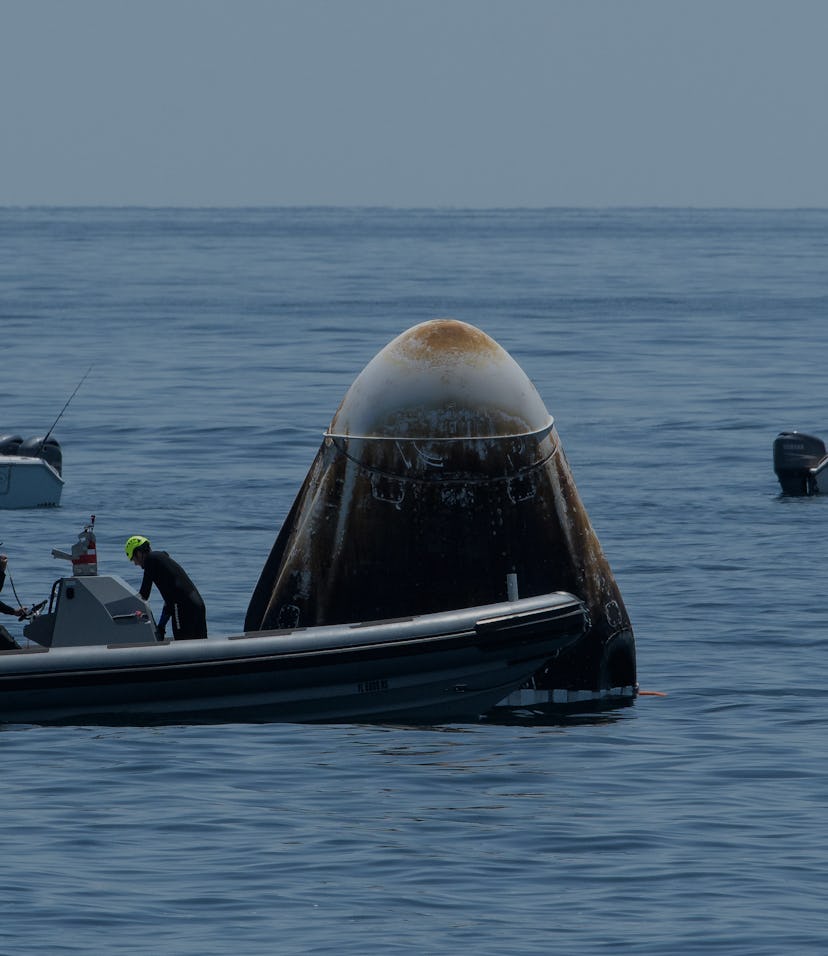Culture
SpaceX will work to keep recreational boats away during its next spaceship landing
Increasing public interest has made people eager to get a firsthand look despite the dangers.

SpaceX is addressing safety issues ahead of its next spaceship launch scheduled for October 31. Back in August, rising public interest in Elon Musk's space faring company led eager members of the public racing to the landing spot where the Crew Dragon capsule touched down in the Gulf of Mexico. It wants to prevent that from happening again.
Capsules are hazardous — When the capsule landed, astronauts Bob Behnken and Doug Hurley were met with a slew of onlooker boats surrounding the spaceship. That's dangerous, according to NASA, because the capsule was covered in low levels of poisonous gas. SpaceX's recovery team wouldn't even get near it until enough time had passed for the gas to have dissipated.
To address the issue, the company will prevent boaters from crowding near its next spaceship, the Crew-1, with a 10-mile keep-out zone enforced with the help of the U.S. Coast Guard. Boats will be patrolling the area to ensure nobody slips by.
Space is cool again — It's normal for space geeks to watch landings safely from shore or on TV from the comfort of their living rooms, but the phenomena of regular people taking boats out to chase after capsules is unheard of. But then again, influencers and YouTubers like MKBHD weren't around to talk about NASA the way they fawn over SpaceX and Tesla CEO Elon Musk today.
The company has made spaceflight hot again with innovations like reusable rockets that can land on floating pads in the middle of the ocean. With its Starlink service, SpaceX also plans to bring faster satellite internet to rural America and it promises that someday inter-satellite laser transmission will enable information to travel across the world at the speed of light. Its initial service is already been used to provide connectivity in disaster-struck parts of the State of Washington.
The Crew-1 mission planned for October 31 will carry four astronauts who will stay on the International Space Station for six months versus the three of the last mission. It's the first of six round-trip flights that NASA has contracted to SpaceX after relying on Russian rockets for the past ten years.